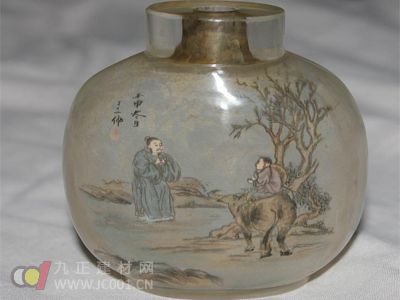What is inner painting? Inner painting is a unique and fascinating art form that originated in China. Artists use glass or crystal bottles as their canvas, and with specially designed fine-tipped pens, they create intricate images on the inside of the bottle’s walls. This technique requires immense precision, control, and patience, as the artist must draw without seeing the image directly. The result is a delicate and breathtaking piece of art that appears to be painted from within. Rooted in the tradition of snuff bottle painting, inner painting has evolved into a respected craft. It involves using fine brushes to paint detailed scenes, landscapes, calligraphy, and even portraits inside small glass containers. The process is so delicate that it's often referred to as "the art of ghosts and craftsmanship." These pieces are not only visually stunning but also highly collectible, making them a true treasure of Chinese culture. The history of inner painting dates back over 400 years, when snuff was introduced to China during the Qing Dynasty. As snuff became popular, people began to decorate the small bottles used for storing it. In the Jiaqing and Daoguang periods, artists started painting inside these bottles, giving birth to the first inner painting snuff bottles. Over time, this craft developed into a wide range of artistic expressions, including inner painting ornaments, beads, lighters, perfume bottles, and more. According to an old legend, the origin of inner painting can be traced back to the late Qianlong era. A local official, unable to bribe his way through the bureaucratic system, ended up in a Beijing temple. He used a cigarette swab to clean out a glass snuff bottle and accidentally created scratches on its inner wall. A monk noticed the scratches and used a bamboo stick to paint a simple image inside the bottle. This unusual technique marked the beginning of inner painting. Initially, inner painting was limited to simple patterns like dragons, phoenixes, and landscapes due to the smooth surface of the glass. Later, artists discovered a way to make the inner walls frosted by shaking iron sand and emery inside the bottle, allowing ink and color to adhere better. This innovation led to more complex and refined works, eventually evolving into poetry, calligraphy, and detailed paintings. Today, inner painting is divided into four major schools: Beijing, Fujian, Shandong, and Guangdong. Among them, the Beijing school is the most influential, known for its high level of skill, large scale, and rapid development. Recently, it was included in the National Intangible Cultural Heritage list. Hengshui, Hebei, the birthplace of this art, was even officially recognized as the "Hometown of Chinese Inner Painting" by the Ministry of Culture. Features: Exquisite, intricate, and full of cultural depth. Classification: Beijing, Fujian, Shandong, and Guangdong Waterborne Polyurethane Hardener
Waterborne polyurethane hardener, also called as cross-linking agent is hydrophilic aliphatic polyisocyanate.
PU cross-linking agent,hydrophilic aliphatic polyisocyanate,waterborne PU hardener Shanghai Na Long Tech Co., Ltd , https://www.na-long.com
Introduction to painting